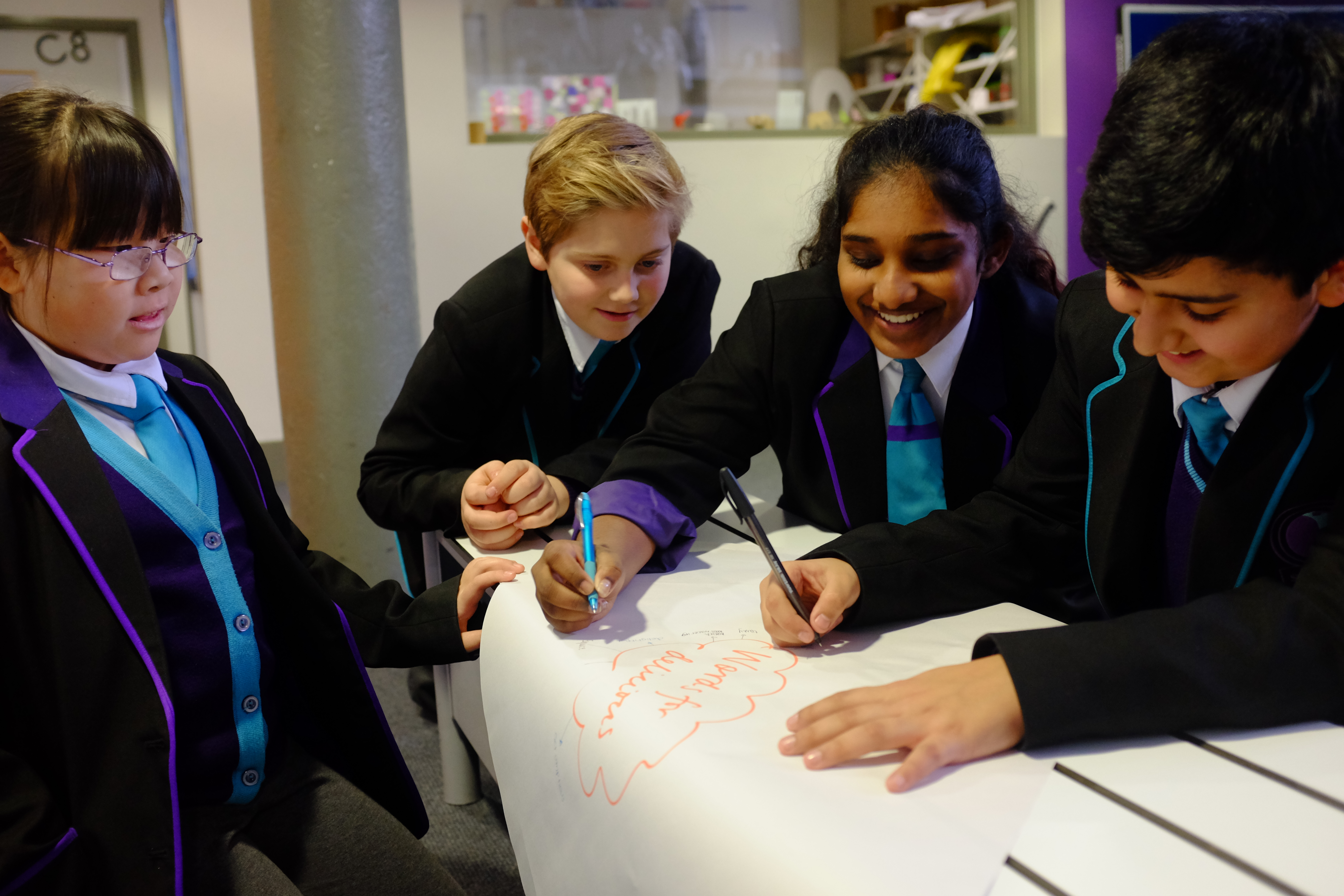Throughout the pandemic communities across the nation have sprung into action, connecting and looking out for each other more than usual, organising themselves to support those in need. School communities are no different; as schools were forced to close their doors to most students last year, many started to operate as food banks, adapting to support their communities in new and important ways. The old adage, ‘a school is at the heart of a community’ never rang so true. As lockdown begins to lift and some semblance of normality is restored, we reflect on the role of oracy in nurturing a community of learners in the classroom.

Oracy and building your classroom community
Throughout the pandemic communities across the nation have sprung into action, connecting and looking out for each other more than usual, organising themselves to support those in need. School communities are no different; as schools were forced to close their doors to most students last year, many started to operate as food banks, adapting to support their communities in new and important ways. The old adage, ‘a school is at the heart of a community’ never rang so true. As lockdown begins to lift and some semblance of normality is restored, we reflect on the role of oracy in nurturing a community of learners in the classroom.
Being part of a community provides us with a sense of belonging, creating opportunities for us to connect and share, often through speaking and listening; it is central to our human experience. One of our first experiences of community is in the school classroom. In order to feel valued and respected, students must feel that their voices are important, that they are listened to and understood. As one Year 3 student explains,“what makes me enjoy talking the most is that everybody’s listened to you, and you’re part of the world, and you feel respected and important.”
Teaching Listening
To develop a culture of listening in the classroom, in which all students feel that their voices are valued, it is important to explicitly teach students how to listen and why this is so important. With younger students why not use or adapt Voice 21’s Listening Ladder which helps students understand that good listening goes beyond staying silent and looking at the speaker.
With older students, try these excellent resources from the Samaritans to encourage students to reflect on the impact and importance of listening, as well as how this can be done well. The Listening Wheel is a particularly useful tool to help students understand the different facets of listening, and was used successfully by many Voice 21 Oracy Schools to facilitate ‘recovery conversations’ when students returned to school in September.
Why not use this to prompt a class discussion on the value of being a good listener? Or as a basis for creating a set of ‘Listening Guidelines’, similar to your ‘Discussion Guidelines’ but with an explicit focus on listening.
With younger students, have some fun by asking them to role play being a good and bad listener. Ask the students who were being listened to (or not!) in this scenario how they felt when their partner was being a bad listener. After creating some guidelines for what makes good listening, you could task some students with being ‘Listening Detectives’, looking out for who’s demonstrating particularly good listening during class discussions.
Building trust
An important element of community building in the classroom is supporting students to develop trusting relationships with one another. Not only will this enable them to engage in educationally productive discussion with their peers, it also means that they will be well-equipped to tackle more challenging social-emotional conversations thoughtfully and sensitively. This does not mean that your students need to be best friends with all of their classmates. Instead they should feel comfortable tackling difficult conversations head-on with their peers without fear of being judged or disrespected.
So, how can you create a climate of trust in the classroom? In this excellent article on ‘Building Community with Student-Driven Conversations’, Molly Josephs suggests developing norms for how a group talks and listens to each other, and then creating space to reflect on these norms post dialogue. If there are individuals who consistently violate norms and undermine trust, she suggests having a one-to-one conversation with them about how their actions are affecting the group’s dynamics.
In the article, ‘light, funny and easy’ topics are suggested as a way to build trust and rapport before moving onto more difficult or weighty topics. For these, Molly suggests following your students’ lead; what are their interests and what do they care about? ‘Would you rather?’ questions are a fun and lighthearted way to structure these types of conversations: “would you rather be able to fly or breathe underwater? Would you rather be the CEO of Apple or Samsung?” Why not ask students to generate their own would you rather questions for discussion in registration or at the end of a lesson? You could have a bank that you choose from to which students contribute located somewhere in your classroom.
Let us know how you get on using oracy as a tool for community building in your classroom by sharing your ideas with us on Twitter #gettalkinginclass
Looking to prioritise oracy teaching and learning at your school? Become a Voice 21 Oracy School today! Find out more here

This article was written by Sam Wright, Voice 21 Oracy Consultant, and Emily Snow, Schools Engagement Officer, who both support our Voice 21 Oracy Schools to transform their teaching and learning and achieve a high-quality oracy education. You can meet our whole team here.
© 2022 Voice 21. Voice 21 is a registered charity in England and Wales. Charity number 1152672 | Company no. 08165798